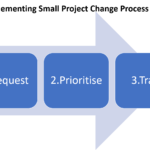The task of implementing a project management office (PMO) in an organisation is big, challenging, and potentially very rewarding. As with any project, there is plenty that can go wrong when creating a PMO, so we’re going to look at the five common pitfalls of implementing a PMO and how to avoid them.
Here, we’ll explore the basic challenges presented by each pitfall and some simple ways to avoid them happening in your new PMO. In the next series of blogs, we’ll get into each pitfall in more detail.
Pitfall 1: Unclear goals
The need to create a PMO in your organisation can be driven by lots of factors. There could be a change programme being implemented internally that needs to be managed, or your client projects have reached a point where they need harmonising, for example.
Whatever the reason for creating the PMO, everyone involved needs to understand the purpose. Is the office there to streamline administration.? Perhaps it is to provide structure to the project management framework being used?
You need to create a PMO with clearly defined goals that are measurable and time-bound. You will be able to demonstrate clear value to your office and bat back any questions about why your office exists with strong KPIs.
Pitfall 2: Stakeholders not buying in
Your PMO will have a lot of people involved in its creation and longer-term success. There can be a range of stakeholders, such as:
- Your PMO’s C-suite sponsor
- The project managers who will operate under the PMO
- The project clients, be they internal or external
- End users of the project deliverables
Each will need a clear understanding of why your PMO is being created and how it will benefit them; see the previous pitfall. If your stakeholders don’t buy into your PMO, they may ignore it, bypass it, or even actively petition to have it disbanded.
To gain buy-in from your stakeholders, make sure you communicate with them clearly. Target your communications to their needs for the PMO – a project manager will understand the need for your office in a different way to clients, for example.
Pitfall 3: Not enough resources
When creating any new department in a business, there needs to be an investment made. People need to be hired; equipment and space need to be hired or bought; in short, money needs to be spent.
As someone with experience in project management, you should have a handle on how to create a budget in line with needs. If you’ve never set up a PMO before, you should work with your network, your sponsor, and other project professionals to understand costs.
If you don’t get given enough money or the correctly-skilled people to set up your PMO, it could be ripe to fail or at least not achieve what it was intended for. Be sure to budget properly and advocate for the needs of the office.
Pitfall 4: Roles and responsibilities not established
Even when you get the human resources you need for your PMO, there could still be problems ahead without clearly defined roles and responsibilities.
When setting up your PMO, you need to drill down exactly who is going to do what. You want to ensure that the PMO services you offer are supported by people with the right skills and also that work doesn’t get duplicated in the office.
Without clear responsibilities, there can be no accountability. The KPIs that you define at the start of the PMO creation process need to be attributed to people so that the PMO stays on track.
Pitfall 5: Rigid structures
At the start of the PMO set-up process, you and your stakeholders will define what you want the PMO to look like. However, we all know the world isn’t a perfect place and that plans can get derailed, so you need to plan flexibility into your PMO.
It may be that you can’t recruit the exact skills you need and have to train some team members, or the project framework you wanted to use doesn’t match the projects you’ll be taking on.
You need to have structures that are able to adapt to a changing landscape as you create your PMO, whilst also keeping an eye on the end goal and being sure you can deliver what is expected.
Pitfalls of implementing a PMO
There are many things to watch out for when creating your PMO to make sure it doesn’t go off-track. Being aware of the five pitfalls of implementing a PMO and knowing how to avoid them can be the key to setting up a successful PMO.






